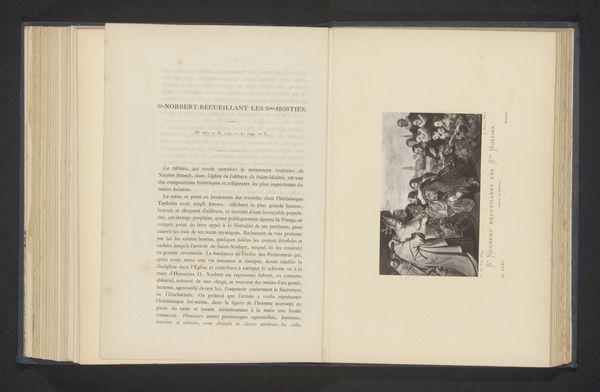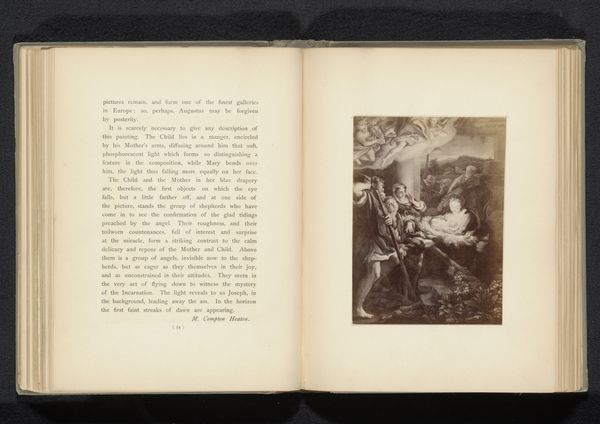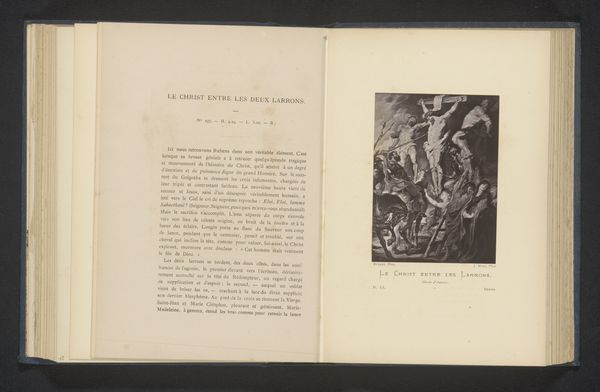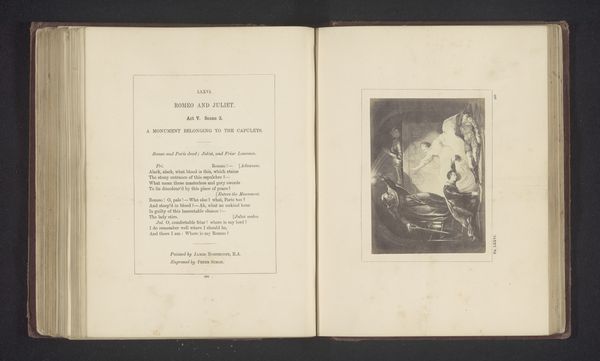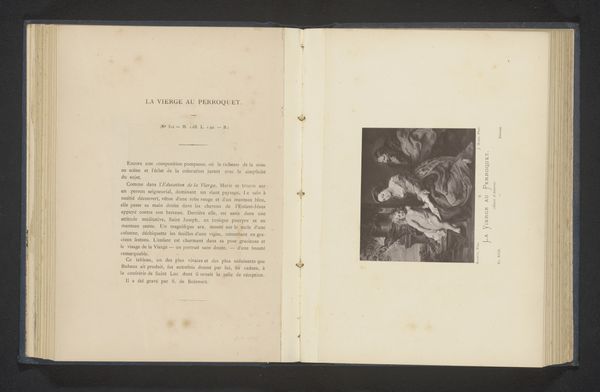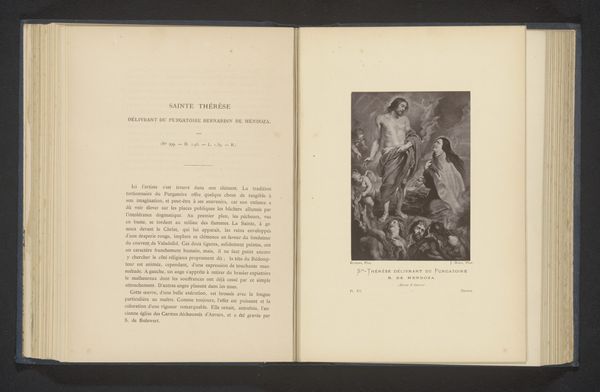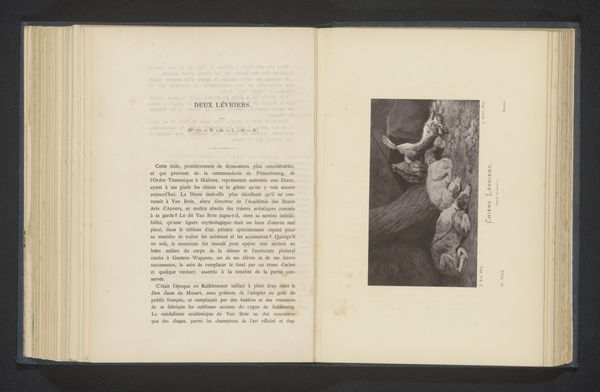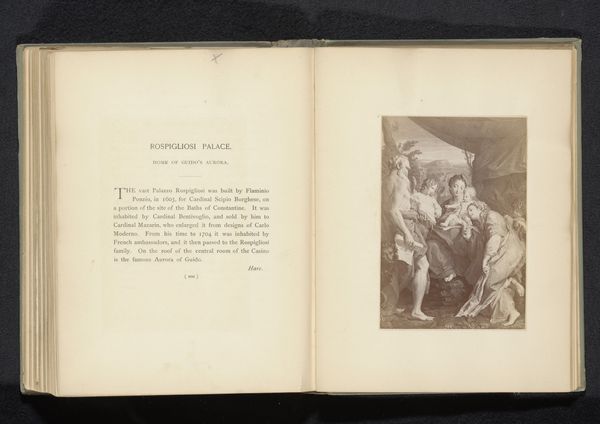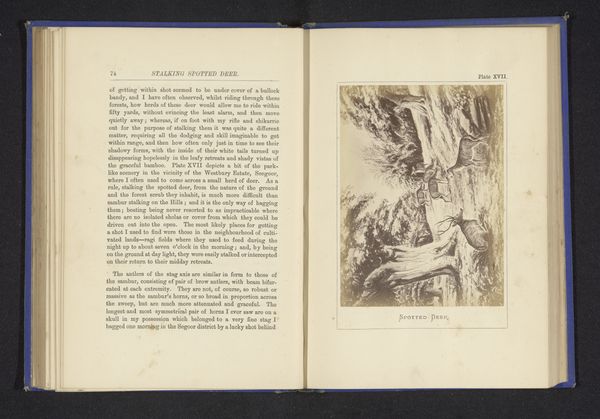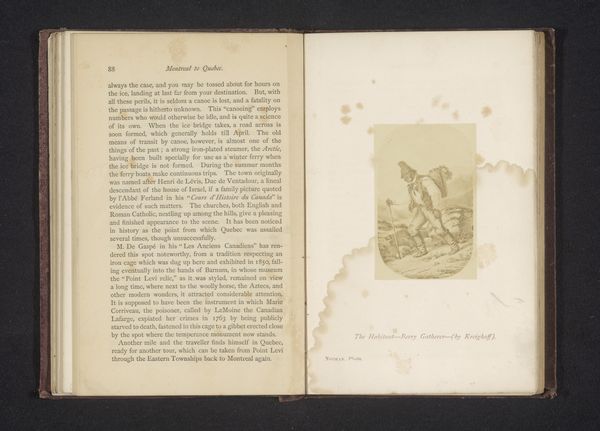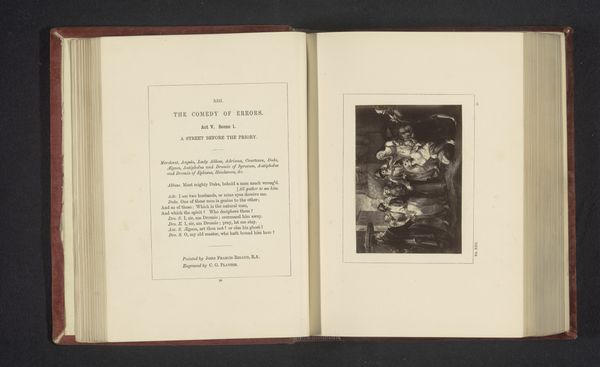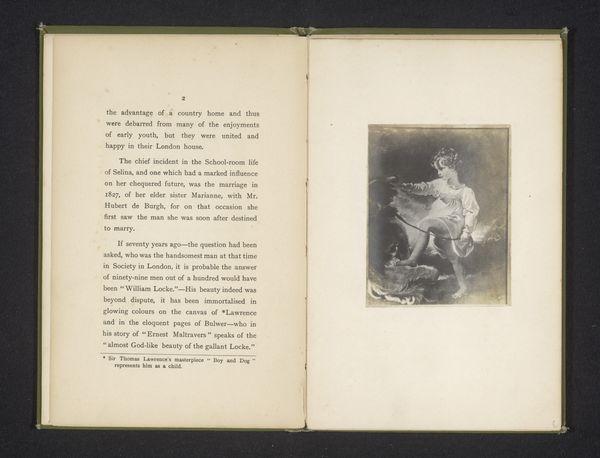
Dimensions: height 72 mm, width 129 mm
Copyright: Rijks Museum: Open Domain
Curator: This image presents "Reproductie van De Bewening van Christus door Anthony van Dyck," a print made before 1877 after a work by Anthony van Dyck, focused on the Lamentation of Christ. The use of engraving brings such starkness, doesn't it? Editor: Yes, the heavy contrast gives it an intense, almost tragic feel. How would you interpret the engraving in relation to Van Dyck's original painting? Curator: The crucial aspect here is to acknowledge how the materials of printmaking shift the dynamics. The translation from paint to engraving involves a whole different labour process. The social context, therefore, moves beyond purely religious considerations to consider the engraver's role as artisan and interpreter, and how prints facilitated wider distribution of such images, affecting accessibility and consumption patterns. Do you see how the reproduction detaches the image from its unique art object status and situates it within a new framework of accessibility? Editor: I think so. So, the print makes the image more accessible, moving it from an exclusive object for the wealthy, to something circulated and consumed by more people, highlighting its economic value in some way? Curator: Precisely. This intersects with issues of labor, consumption, and the dissemination of cultural capital. Consider the social role of prints, their connection to early forms of mass media, and the economies that propelled their production. How does that affect our reading of its emotional impact? Editor: So, rather than solely focusing on religious interpretations, we can analyze the social context surrounding its production and distribution. I never considered that. It makes me see prints, engravings and other reprographic techniques in a new light. Curator: Exactly, now we start appreciating these prints and recognizing how they reshaped the consumption and understanding of images.
Comments
No comments
Be the first to comment and join the conversation on the ultimate creative platform.
